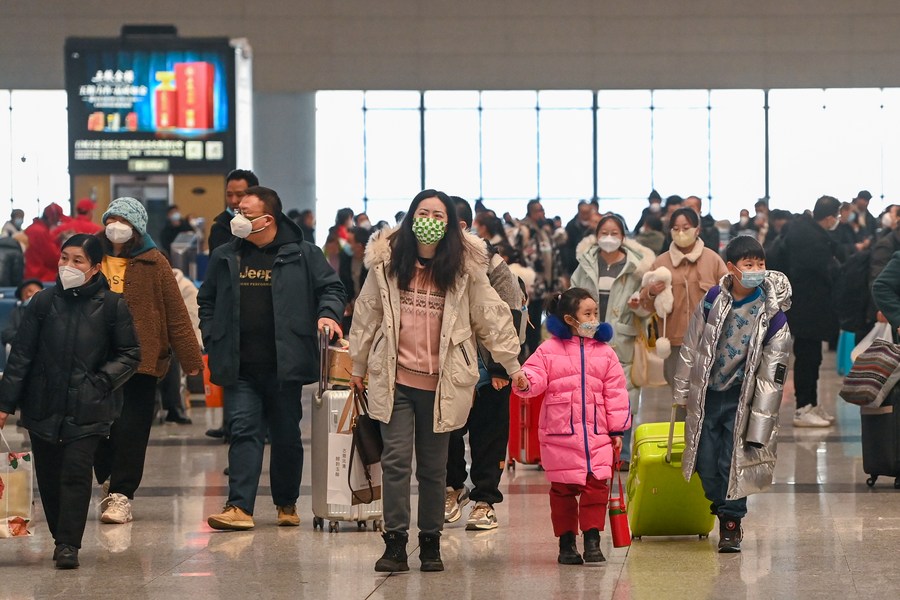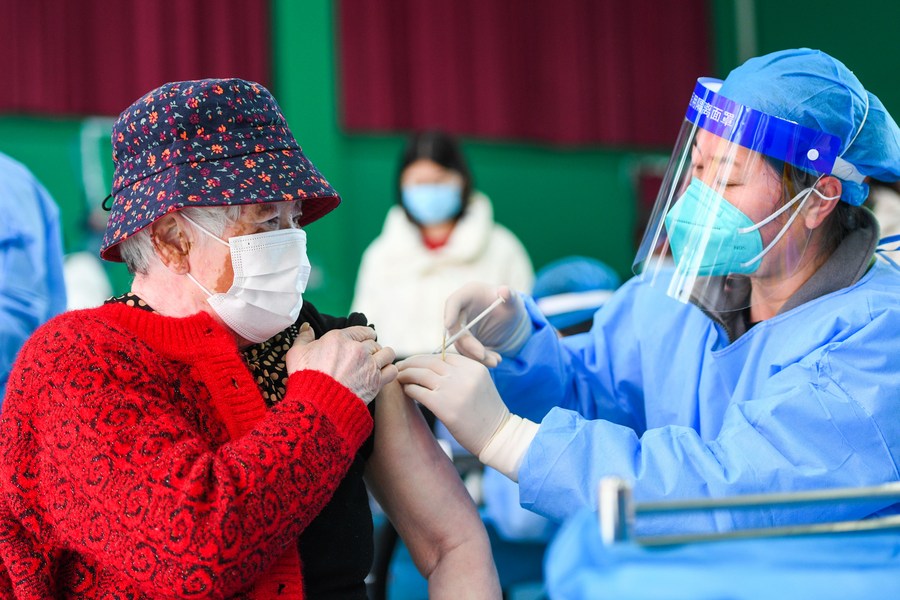China Keeps a Watchful Eye on COVID-19 After Dealing with a Massive Wave of Infection

For the whole world, monitoring virus variation is one of the most important tasks, and China is no exception. The public should continue to stay focused on protecting their health.
Despite Chinese health officials announcing on January 30 that the current wave of COVID-19 infections, the first wave to hit the country after it adjusted its COVID-19 control policies late last year, “is coming to an end,” the country remains alert.
“China will continue its surveillance of outpatient and emergency department visits, severe cases and deaths, as well as inbound travelers, for new variants, give early warnings and take precautions,” Chen Cao, a researcher with the Chinese Center for Disease Control and Prevention (China CDC), said at a January 30 press conference.
Despite initial concerns that the Spring Festival travel rush, the country’s typical 40-day transportation peak around the Chinese New Year—which fell on January 22 this year, might accelerate the virus’ spread, official figures showed no spikes during the holiday from January 21 to 27. However, this does not mean the virus is disappearing; rather, this can be partly attributed to the herd immunity developed after China eased quarantine requirements in December 2022, experts said. Like elsewhere in the world, China needs to brace itself for future resurgences, they cautioned.
Leaving the past behind
“The most recent wave of the COVID-19 pandemic in China has ended,” China CDC announced in its report, named COVID-19 Clinical and Surveillance Data. The report, released on January 25, added that no new SARS-CoV-2 mutations have been identified.
The report said the country’s latest wave of infection peaked in late December last year and then went on a continuous decline. It based this conclusion on nationwide surveillance data on the disease from December 9, 2022 to January 23, 2023.
The number of severe cases, meaning patients who have trouble breathing or experience persistent pain or pressure in the chest, and deaths in hospitals, reached a peak in late December 2022 or early January, and continued to go downward, according to the report. It also noted that related visits to outpatient fever clinics, usually units affiliated with hospitals’ emergency department, showed the same trend.
No significant flare-ups occurred during the Spring Festival holiday, China’s most important festival that generates the country’s, or even the world’s, largest annual human migration. This year, 226 million trips were made during the seven-day holiday, a year-on-year increase of 71.2 percent, according to the Ministry of Transport.
National Immigration Administration data showed 2.87 million cross-border trips were made during the holiday, including 1.43 million inbound trips and 1.44 million outbound trips, a 120.5-percent year-on-year increase.

“One of the main reasons for the decline in infections was that the vaccination coverage rate in China has reached a high level,” Liu Yu, a researcher with the School of Public Health at Peking University, told People’s Daily.
China CDC data showed that more than 3.4 billion COVID-19 vaccine doses had been administered on the mainland by January 20, and China’s full vaccination rate reached 90.5 percent, an increase of 0.8 percent from July 2022. The vaccine coverage rate for people aged over 60 has hit 96 percent, up 11.3 percentage points from about six months ago.
To better grasp the pandemic situation, a monitoring and reporting mechanism for the diagnosis and treatment of COVID-19 cases at primary-level medical institutions across the country was set up, National Health Commission official Fu Wei said at the January 30 press conference.
Living in the now
Following the recent increase of weekly reported deaths worldwide, the World Health Organization (WHO) said in a statement on January 30 that COVID-19 continues to constitute a public health emergency of international concern.
Although infection or vaccination may lead to higher levels of population immunity globally and limit the impact of morbidity and mortality, “there is little doubt this virus will remain a permanently established pathogen in humans and animals for the foreseeable future,” the WHO’s International Health Regulations (2005) Emergency Committee said.
Despite the waning pandemic, the Chinese authorities and medical institutions haven’t relaxed their efforts to safeguard people’s health. “The focus of the new COVID-19 response is on protecting people’s health and preventing severe cases,” Tang Yida, assistant to the dean and chief cardiologist with the Department of Cardiology at Peking University Third Hospital, told Beijing Review.
In the three to six months to come, the level of immune protection obtained after infection will decline, and the risk of infection will increase, according to Li Tongzeng, head of the Department of Respiratory and Infectious Diseases at Beijing Youan Hospital affiliated with Capital Medical University.
Li warns of the probability of new infection peaks when the virus mutates into more contagious variants. But he added the next possible peak will not be as serious as the one late last year.
Currently, COVID-19 mostly affects those who have not yet been infected, constituting 15 to 20 percent of China’s total population, Lu Mengji, a virologist with the Institute for Virology at the University of Duisburg-Essen in Germany, told China News Service on January 29.

Seniors with underlying diseases should also be extra careful, Lu said, adding that, if they haven’t been infected already, getting vaccinated as soon as possible will better protect them.
Currently, medical services at township and village clinics and community health centers, the primary-level providers of healthcare in both rural and urban areas, have continuously improved nationwide. More than 94 percent of basic-level medical and healthcare institutions now have a sufficient stock of fever and cough-suppressing medication plus traditional Chinese medicine (TCM), as TCM has been showing its unique advantages in the treatment of COVID-19 infection. As of January 27, these same institutions had 2.89 million fingertip pulse oximeters and 219,000 oxygen generators—both crucial equipment for monitoring any changes in a patient’s condition.
To prepare for future waves of COVID-19 infection, Beijing plans to carry out a survey to measure COVID-19 antibody levels across its residential population to help assess the capital’s pandemic situation and fine-tune its virus control strategy. The study will hopefully generate more insights into the actual number of asymptomatic cases and the antibody levels of people inoculated with different vaccines.
To respond to public concern and educate people on COVID-19 and its variants, health authorities and experts have been updating all related information on traditional and social media platforms. For example, China CDC informed the public on January 31 about a new Omicron variant CH.1.1 detected in over 65 countries. Explaining the pathogenicity and the domestic detection details, the agency said the new variant won’t cause another infection wave nationwide in the short term.
“For the whole world, monitoring virus variation is one of the most important tasks, and China is no exception. The work is still ongoing. At the same time, the public should continue to stay focused on protecting their health,” Liu concluded.
 Facebook
Facebook
 Twitter
Twitter
 Linkedin
Linkedin
 Google +
Google +










